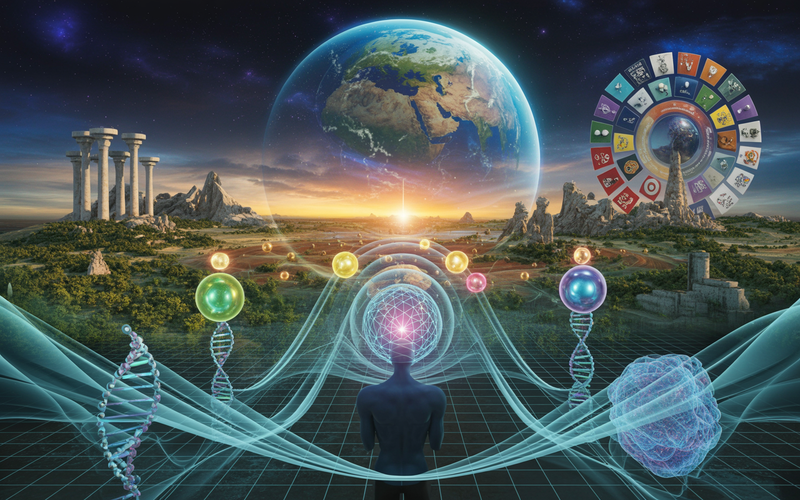The Expansive Evolutionary Law: From Life on Earth to Stars and Minerals
In groundbreaking research, scientists and philosophers have collaborated to unveil a transformative evolutionary principle that goes far beyond the traditional understanding of the term. A study in the Proceedings of the National Academy of Sciences introduces this evolutionary law as a fundamental norm governing diverse natural systems, not just biological

In groundbreaking research, scientists and philosophers have collaborated to unveil a transformative evolutionary principle that goes far beyond the traditional understanding of the term. A study in the Proceedings of the National Academy of Sciences introduces this evolutionary law as a fundamental norm governing diverse natural systems, not just biological entities.
From Life to Stars: A Universal Evolution
Traditionally, evolution is associated with life on Earth, charting the progress of species over millennia. However, the new law posits that evolution is inherent in any massively complex system, from the cosmic ballet of stars and planets to the intricate dance of atoms and minerals.
This "Law of Increasing Functional Information" suggests that a system will evolve if its myriad configurations are subjected to a selection based on specific functions. At its heart, this new understanding acknowledges three core functions: stability, energy, and novelty. These functions can manifest in many forms, from the basic stability of atomic arrangements to the advanced behaviors exhibited by complex life forms.
Life and Minerals: An Intertwined Evolution
Life's evolutionary tapestry is replete with examples: the emergence of photosynthesis as single cells harnessed sunlight, multicellular entities evolving from cellular collaboration, and the birth of species due to behaviors like walking or flying.
Remarkably, the mineral world shares a similar evolutionary path. Our planet began with only about 20 minerals, but intricate processes over 4.5 billion years expanded this to the nearly 6,000 minerals we identify today. This evolution intertwined with life itself, as organisms used minerals to construct shells, teeth, and skeletal structures.
Stars: The Cosmic Evolution
A comparable process is seen in the cosmos. The first stars, born from hydrogen and helium, synthesized about 20 heavier elements. Subsequent stellar generations used this foundation to create nearly 100 more elements, underscoring the universality of the evolutionary principle.
Dr. Michael L. Wong, the study's first author, aptly summed it up, stating that "evolution is everywhere."
Implications and Future Perspectives
The study's findings expand our comprehension of evolution, offering insights into:
- Complexity Potential: Understanding how systems might evolve in the future, identifying their potential to become even more intricate.
- Influencing Evolution: Suggestions to artificially speed up evolution by enhancing selective pressures, diversifying interacting agents, or increasing system configurations.
- Information in Evolution: A deeper grasp of the role of information in characterizing complex phenomena and the unique way life processes this information.
- Astrobiological Implications: As we seek life beyond Earth, understanding the boundary between life and non-life through selection for function could refine our extraterrestrial pursuits.
- A Guide for AI Evolution: With Artificial Intelligence evolving rapidly, a universal law that predicts the evolution of both natural and symbolic systems is invaluable.
In essence, this collaborative effort between the sciences and philosophy enriches our understanding of the world, casting the net of evolution beyond life on Earth to encompass the broader universe. This newly articulated "law of increasing functional information" can be seen as a complement to existing natural laws, providing a more holistic view of the universe's workings.




